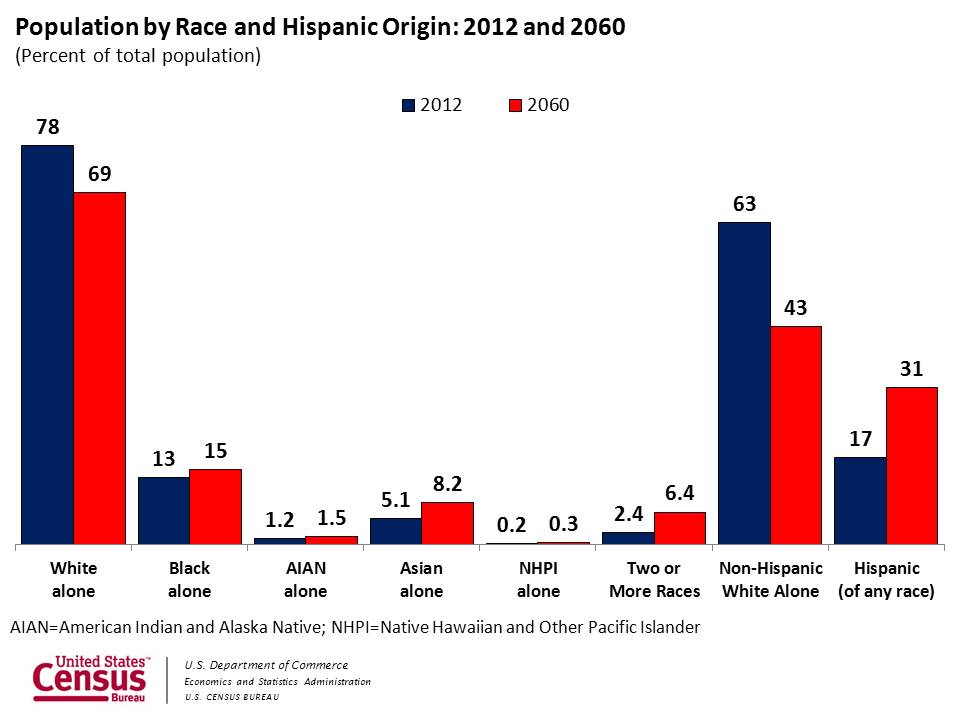
The non-Hispanic white population is projected to peak in 2024, at 199.6 million, up from 197.8 million in 2012. Unlike other race or ethnic groups, however, its population is projected to slowly decrease, falling by nearly 20.6 million from 2024 to 2060.
Meanwhile, the Hispanic population would more than double, from 53.3 million in 2012 to 128.8 million in 2060. Consequently, by the end of the period, nearly one in three U.S. residents would be Hispanic, up from about one in six today.
The black population is expected to increase from 41.2 million to 61.8 million over the same period. Its share of the total population would rise slightly, from 13.1 percent in 2012 to 14.7 percent in 2060.
The Asian population is projected to more than double, from 15.9 million in 2012 to 34.4 million in 2060, with its share of nation's total population climbing from 5.1 percent to 8.2 percent in the same period.
The U.S. is projected to become a majority-minority nation for the first time in 2043. While the non-Hispanic white population will remain the largest single group, no group will make up a majority.
All in all, minorities, now 37 percent of the U.S. population, are projected to comprise 57 percent of the population in 2060. (Minorities consist of all but the single-race, non-Hispanic white population.) The total minority population would more than double, from 116.2 million to 241.3 million over the period.
Projections show the older population would continue to be predominately non-Hispanic white, while younger ages are increasingly minority. Of those age 65 and older in 2060, 56.0 percent are expected to be non-Hispanic white, 21.2 percent Hispanic and 12.5 percent non-Hispanic black. In contrast, while 52.7 percent of those younger than 18 were non-Hispanic white in 2012, that number would drop to 32.9 percent by 2060. Hispanics are projected to make up 38.0 percent of this group in 2060, up from 23.9 percent in 2012